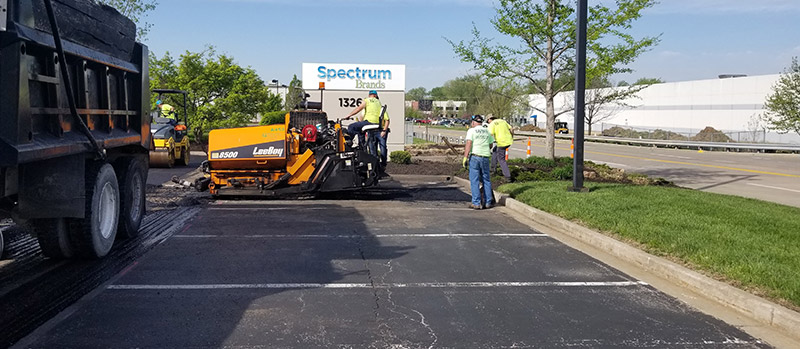9 Simple Techniques For A1 Professional Asphalt & Sealing Llc
9 Simple Techniques For A1 Professional Asphalt & Sealing Llc
Blog Article
A1 Professional Asphalt & Sealing Llc - The Facts
Table of ContentsOur A1 Professional Asphalt & Sealing Llc StatementsGetting My A1 Professional Asphalt & Sealing Llc To Work7 Easy Facts About A1 Professional Asphalt & Sealing Llc ShownAn Unbiased View of A1 Professional Asphalt & Sealing LlcA Biased View of A1 Professional Asphalt & Sealing Llc

The oil in an auto engine is not simply oil. The REOB contains all the ingredients that were in the waste oil as well as the wear metals from the engine (mostly iron and copper).
Nonetheless, by making numerous blends utilizing various REOB examples and different asphalt binders, the variants mainly can be averaged out. Several States offered examples of well-known REOB structure to TFHRC researchers, that assessed the examples to compare the percentage of added (known) REOB to the found (evaluated) amount. The evaluations showed an equivalent portion of added and found REOB.
The Main Principles Of A1 Professional Asphalt & Sealing Llc
None of those States realized that the asphalt they were purchasing consisted of REOB. One State urged its samples had no REOB - https://www.gaiaonline.com/profiles/a1asphaltseal/46656807/.
Of the 1,532 examples checked, 12 percent consisted of REOB, and some had significantly high degrees of it at 1020 percent. The highest possible degree was 34 percent in an example from Texas, which TxDOT had utilized in a patching substance. This screening additionally disclosed the existence of phosphoric acid in 11 percent of the samples, and 2 percent consisted of ground tire rubber.
Two years ago at TRB's yearly conference, the Federal researchers held an REOB workshop and offered the findings of their laboratory assessments to a standing room-only crowd. Some agencies do not especially ban REOB, they do impose physical examinations that prevent its useeffectively a restriction. Others do not outlaw it by requirements, however have agreements with asphalt providers to prevent using REOB
Things about A1 Professional Asphalt & Sealing Llc
Ohio and Texas limit degrees to less than 5 percent of the asphalt. To establish a reputable test technique that all States can utilize, the TFHRC scientists established up a round-robin examination strategy.
In total amount, the researchers prepared and shipped 720 blends. The individuals are evaluating the examples separately utilizing the guidelines given by the TFHRC scientists. The round-robin testing is virtually completed, and TFHRC remains in the process of collecting the outcomes. The outcome will certainly be more tips here a recommended AASHTO test method that any kind of State can take on and make use of (what is cold mix asphalt).
The pavement with REOB, which is situated 0.6 mile (1 kilometer) from the sidewalk without REOB, has similar subgrade, website traffic thickness, and climate. The sector of Highway655 with 5 to 10 percent REOB showed substantial fracturing. In this instance, the presence of REOB was the recognized cause of breaking at a reduced temperature levels.
"In our experience in Canada, also small amounts of 23 percent can be a trouble." Similarly, a section of test pavement in Minnesota (MN1-4) discovered to consist of REOB additionally fractured too soon. The pavement done well for the initial 3 to 4 years, however then began to break. This sidewalk is additionally subject to low temperature levels.
Facts About A1 Professional Asphalt & Sealing Llc Revealed
The examinations were not considerable, but they revealed that at degrees of 6 percent or even more, the tensile strength of the asphalt went down considerably. At a degree of 3.5 percent REOB, the variant in the physical examination approaches was higher than the result of REOB. It was tough for scientists to examine whether REOB was present. https://a1-professional-asphalt-and-sealing-llc.jimdosite.com/.

One binder parameter taken into consideration is the distinction between the reduced temperature essential requirements temperature for tightness (S) in the flexing light beam rheometer and the flexing beam of light rheometer creep slope (m-value) noted as Tcritical. TC = TC (S) TC (m-value). Assessment of this criterion is still ongoing. 2 independent research study groups, one from AASHTO and the various other from the Asphalt Institute, ended that more research is required on the use of REOB in asphalt.
Formerly, all asphalt testing measured design residential properties such as tightness. These tests do not show what materials had been included to the asphalt. One example obtained throughout the TFHRC research study had a very strange analysis. The sample had the following examination outcomes: Superpave PG 64-28 with a high temperature grade of 67.3 Tcritical on the bending beam of light rheometer was 6.7 levels Celsius.

The Best Guide To A1 Professional Asphalt & Sealing Llc
These outcomes demonstrate there are weak points in the standardized design testing procedures that may be manipulated. The producer may have an economic benefit and the product passes all the standard examinations, however the item may not be valuable to making sure long-term efficiency. To resolve this concern and the development of new asphalt additives and extenders, TFHRC is starting a research program to use portable spectroscopic tools, x-ray fluorescence spectroscopy, and Fourier transform infrared spectroscopy to enable analyses to be performed in the field as opposed to having to take samples back to the lab.
Report this page